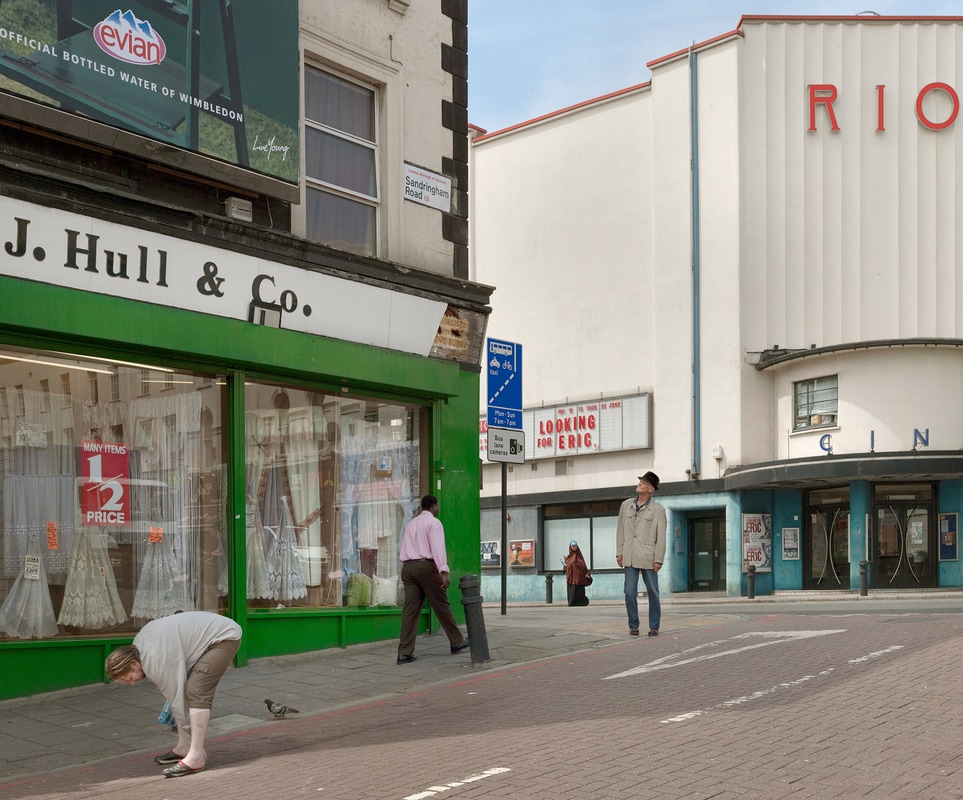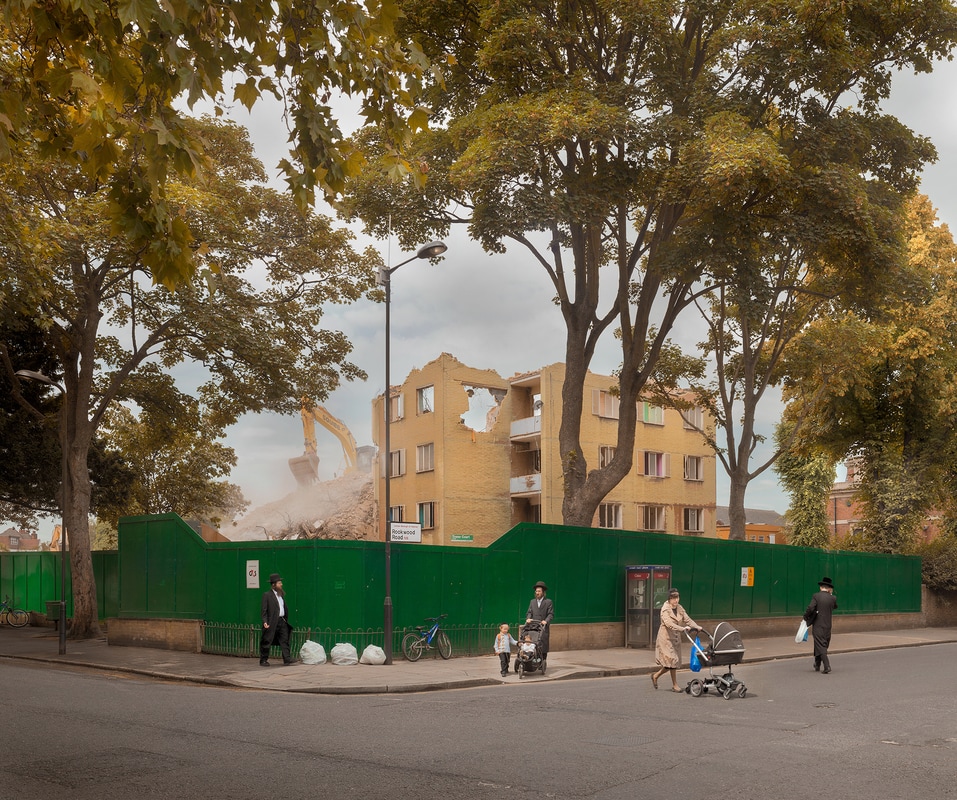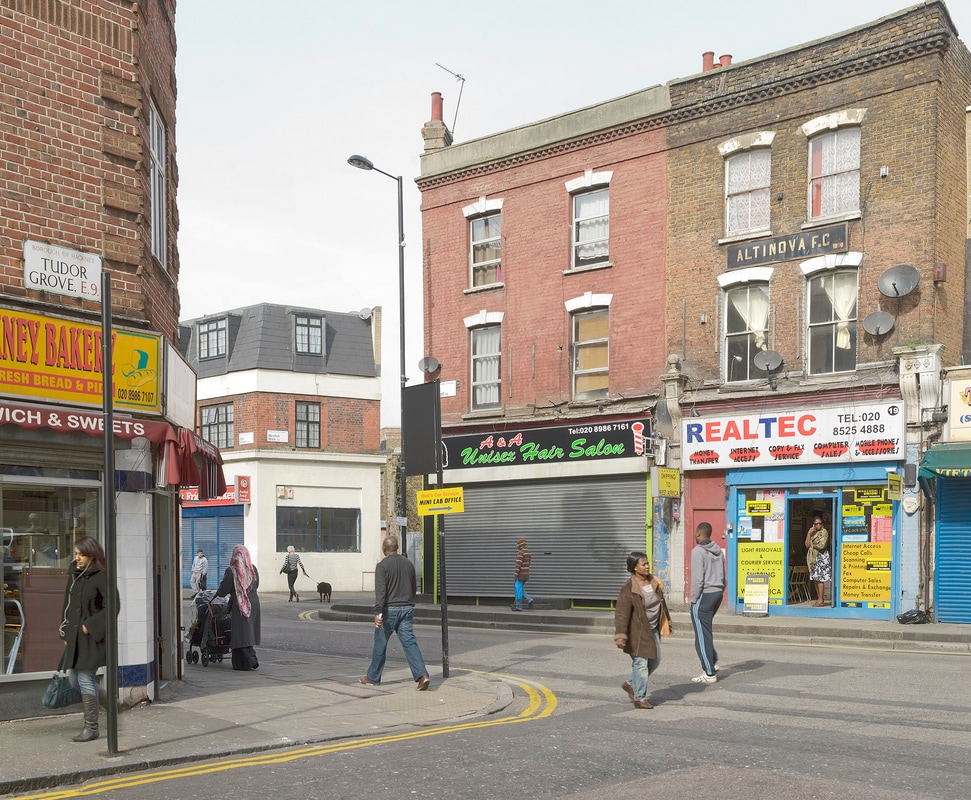|
3/27/2017 1 Comment INTERVIEW: Chris Dorley-BrownHackney-based photographer and archivist Chris Dorley-Brown on the legacy of landcapes, editing experiences and why London defies analysis Photographer, filmmaker and archivist Chris Dorley-Brown has been documenting the changing landscape of Hackney, where he lives and works, since 1979. Dorley-Brown’s recent book Drivers in the 1980s examines cultural change through the commonplace and captures an inimitable sense of the time and place, documenting an East London traffic jam during the 1987 Rolls-Royce sell off. The Longest Way Round, also published in 2015, presents and revisits personal artefacts of both international conflict and family life, making us consider how we process war trauma at home. CKM spoke to Dorley-Brown about his creative process, the city’s place in his body of work, and the future of documentary photography. CKM: Much of your work focuses on Hackney through times of change. What is it about East London that has kept your attention? CDB: The laboratory-like atmosphere, it seems to be a place of experimentation of all kinds through history and still to this day, social, political and cultural. A legacy of the industry and the docklands I suppose. A city of this size with this unique history of defiance and dissent is too good not to explore. There is always a new angle and when you think you've got it worked out it shape shifts into something new. London defies analysis. To me it's a museum of half finished, hare brained schemes. Photographically speaking there is plenty to be getting on with. CKM: Both sides of your family have history in Hackney going back 200 years. Could The Longest Way Round, which collects and reflects on artefacts from your parents’ lives, be read as a prelude to, or explanation for, your photographic and archival work in Hackney? CDB: I was introduced to the materiality of film and the image via my family's movie and stills. The occasions when the projector and screen would be set up would be the highlight of the year. I could never understand why we didn't do it all the time, it was so much better than watching TV. I wanted that sensation to come across in the book, the relationship that memory and family life had with the artefact, it was a kind of irrefutable evidence to me that events had happened and had been recorded so therefore were of vital importance. Also I was aware that the moments captured on film were kind of "performance" in a way, that there was a set of coded behaviours that automatically kicked in every time that the camera was on you, so it wasn't reality in that sense but just a version of reality that was way more interesting. This mode of documenting key events in everyday life came in especially useful for my mum and dad's generation as it was a way of channelling and editing their war experiences. They were 19 in 1939, so right at the epicentre of the conflict. I felt I absorbed this experience vicariously of WW2 as a result. This, I think has filtered down in my photography, for instance there are structural formalities in the way I compose photographs that are really old fashioned pictorial conventions that I find difficult to shake off, all verticals corrected to the perpendicular etc., it's a kind of straitjacket, uptight approach, but there we are. Aside from that, what I found fascinating about my parents’ photos was an attitude in front of the camera that was kind of stoical and humorous at the same time which was a window into their vulnerability, seeing them as young people in their twenties I was able to forge a relationship with them outside my own memory, like discovering a new angle of empathy and love for them. It's evident that particular generation born in the 1920s, documented their wartime experience as a way of rationalising a very real state of chaos. They couldn't really speak about that time when I was a kid but they could show me the pictures and from those I think I always had a pretty accurate impression of their emotional history that didn't need further explanation. When I work out in the field, in the east end, making images, I am channelling the spirit of that generation into the contemporary landscape, in a way it is their legacy that we live with and of course we are repeating that with our kids I guess. CKM: In the book, letters from your father as a prisoner of war in Germany are presented alongside candid family photos, and East London landscapes. What was behind your decision to forego a written introduction, your words first appearing in the afterword? CDB: To allow the reader to establish a personal connection of their own. The images trigger implications of a universal or common narrative. Essentially the trajectory image wise, is from a post Victorian formal structure to, in the space of fifteen years, a "modern" outlook, from lower middle class to solid middle. It uses war as a subterfuge for an aspirant class migration and this was fairly common with that generation. Family photo collections from this era tend to fall into quite conventional patterns and my family were no exception. Many relationships and family structures suffered huge strain around this time, but also there was excitement, risk as well as tragedy. There is a spirit of defiance and optimism that is pervasive. If you could get the story from the pictures, then there was no need to read my stuff afterwards then that was good. A few people have suggested that the pictures should have been captioned throughout the book, but it was a design issue that the publisher Tiffany Jones and myself agreed upon and I'm happy with the way it turned out. CKM: Why did you start taking photographs? CDB: To see what they would look like. I was fascinated by chemistry as a kid, but not at all interested in art until much later, in fact when I discovered that chemistry could only be understood mathematically I completely lost interest. When I left school, my first job was print finishing for photographers, making mounts for exhibitions and so forth. That’s when I started meeting photographers and seeing different kinds or work, so it seemed natural to start making my own. Probably meeting up with the Camerawork / Half Moon brigade, especially Jo Spence and Ed Barber around 1978 was crucial to my education and understanding that photography was a social and political tool. So, I started taking pictures of friends and then I think the last of the so-called slum clearance was happening around that time in London and I just naturally started photographing buildings being demolished. CKM: In your photo book Drivers In The 1980s, your candid pictures distinctly capture the sartorial persuasions of the era. When photographing people, how do you identify aesthetics which, in retrospect, define a time? CDB: Its odd but in the last 30 years, fashions haven't changed that much compared with how they did say between 1950 and 1980, it's still a jeans and trainers kind of convention so in a way it’s hard to define accurately a date from the clothes, I always look at cars or street furniture to date images, but probably it’s the texture and style of the photo itself which usually is the main clue, and, weirdly, the facial expressions of people in the pictures, they do change over time. Nowadays everybody knows how to parade and respond to the prying eye, we all know our best side right? CKM: Your work includes projects which span decades, such as video series 15 Seconds, to others which require you to respond immediately in the moment, i.e. capturing the riots and the Olympics. How do you decide how best to respond to an important moment or change? CDB: I guess once my own archive of images had reached a certain point (or size) where it became a collection that defied normal thematic categorisation or split into 'projects', the pictures took on a life of their own if that doesn’t sound too pretentious! What I mean is, that, they started to dictate to me what to do next rather me having to decide myself and at that point I felt relieved of the burden of having to start a new series with some arbitrary title. So, I am constantly re-purposing, shuffling and re-contextualising bunches of pictures and then gaps appear so I then know what needs to be shot next to fill those spaces. Of course, events occur like the Olympics or the riots and sometimes I feel like responding to them with photos as they are too compelling to ignore. Often these days I will take a virtual walk through a place on Street View and rehearse shots before I actually go there. Or, a friend may describe the place where they live and I will go and check it out. CKM: You have also made work which responds to archival photographs and recordings of oral histories. What role does psychogeography play within your work? CDB: I think all good documentary photography is a psychological response to a question motivated by a specific environment, it's what photography is in essence, a suggested view framed by very finite borders, a way of heightening the mundane or obvious to a point which makes it compelling. Nowadays with digital, the documentary tradition is being fused with information via social media, for instance I may make a picture without any pre-knowledge of the territory but later when that is processed and assembled I will research and contextualise the picture with gathered information and after posting online it gathers feedback and comment which adds to its value and meaning, this process can take years and theoretically could be infinite because the image is copied by others, reposted and appears in a different context. It's getting to the point where the kind of pictures I take will be, in the future, made by robotics or automated systems that constantly update, like Google Street View. These will in time, incorporate archival and historic images fused with data, both anecdotal and institutional, added by users to create seamless animations. In effect, it will be a virtual time travel engine. CKM: Having spent many years documenting and photographing Hackney, recently you have spent time photographing architecture on the London-Essex border. What is it about these places which sparked your interest? CDB: It's just that the east end is getting bigger and the wider diaspora is part of the story, as it has been historically. At the moment, Hackney is a bit over saturated with knowing irony and hipness and therefore is a bit dull to work in. My pictures need a bit of conflict to create a spark and that is in plentiful supply if you get on the Central Line a few stops. I was recently shooting in the Ford car plant in Dagenham which by now is probably completely demolished, it was a profound experience on many levels, the spirit of a quite brutal industrial atmosphere was so evident, so tangible that I couldn't speak for hours afterwards, so many working lives were invested in this space, it left a residue of energy and historical / political implications, it poleaxed me completely. The last match at Upton Park was similar, I am always looking for these sensations because photography can preserve its essence. CKM: What is the relationship between The Longest Way Round and your other projects, such as Drivers In The 1980s? Is there a defining theme that runs through your entire body of work? CDB: Yes, it's where personal and universal memory/experience intersect. The Drivers book was a kind of metaphor for my childhood whereby the confines of the vehicle represented the limits of ambition, so the frustration of captivity, in this case a traffic jam, became a situation that I could view from the outside using photography. The recent book The Longest Way Round expanded on the relationship between my family and picture making as being a coping mechanism for a time of trauma and upheaval. My current work is using the street corners of the east end is a way of studying contemporary urban complexity using the dynamics of architecture and human movement as intersecting forces, sometimes harmonious, sometimes not. CKM: You have spoken about striving for simplicity in your photographs. Many of your photographs of Hackney capture a real sense of stillness in a very busy place. Why is stark imagery something you look for? CDB: I am not looking for starkness per-se, but the spaces in between elements can be as meaningful as the thing you are photographing. It’s about finding balance and breathing spaces so the spirituality and attitude can emerge visually. I like very early in the morning, not only is the light incandescent and 'unreal' but also, I feel slightly detached and woozy at that time of day and that stops me thinking too much and that’s a good thing in my book, I can do the thinking later in front of the screen when making executive decisions about the final structure of the images. The shooting is secondary, a bit like sub-conscious, information gathering. CKM: Many of your projects juxtapose old and new – from photographs of Hackney tower blocks years ago, revisited, to scenes returned to from old family pictures, to the changing self-image of children as they grow up. What do you see yourself revisiting in the next ten years? CDB: Maybe I should document my disintegration from perfect physical specimen to decaying shell of a man! Oh, hang on, too late, damn it! CKM: What’s coming up next? CDB: Keep on as long as I can, just doing this hopefully. I've got a few years left in me and I think it's going to be interesting (terrifying) for all of us.
1 Comment
|
Archives |










 RSS Feed
RSS Feed
